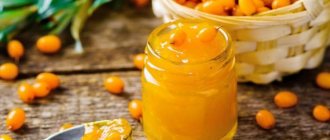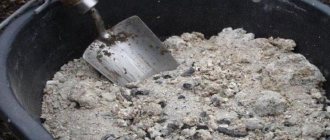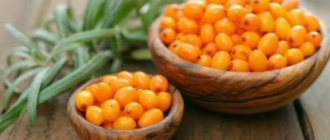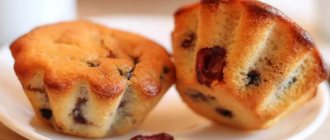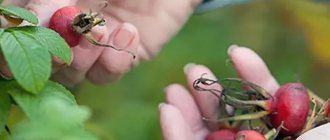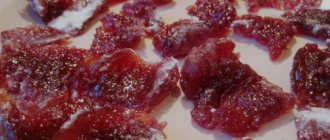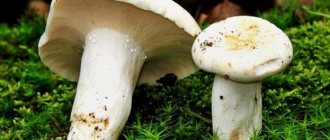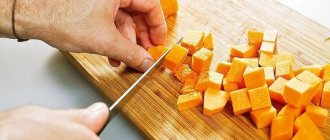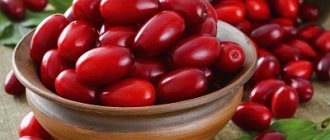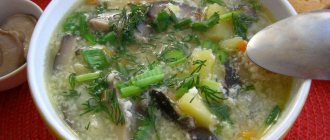What to do with lemongrass berries for the winter. What can be prepared from Chinese lemongrass berries?
Chinese lemongrass is not particularly well-known in our country, but it is a very useful plant. It is also good because you can use not only the bright red fruits themselves as food, but also the leaves and stems, which are brewed for tea and other drinks. Just don’t eat the berries raw – the taste of lemongrass is quite sharp and sour, and sometimes even salty. It is much better to devote your time to preparations. Firstly, heat treatment in combination with a sweetener greatly improves its taste characteristics, and, secondly, drying, boiling or freezing, as a rule, allows you to preserve an appetizing food for a long time and enjoy it throughout the long winter months.
Properties
The fruits of Chinese lemongrass have a bright red rich color, an unpleasant sour taste and a lemon aroma, which explains the name of the plant. The berries are saturated with organic acids, mineral salts, vitamins and other useful elements. It is believed that the use of Chinese lemongrass not only strengthens the human nervous system, but also, if necessary, invigorates.
Other important properties include strengthening the immune system, stabilizing blood pressure, removing excess cholesterol and resisting colds. Since lemongrass is not usually consumed fresh, the fruits are either dried, boiled, or otherwise thermally processed. By the way, this does not reduce the amount of nutrients at all.
For information about the benefits of Chinese lemongrass berries, see the following
How and when to collect fruits?
Chinese lemongrass, also known as Manchurian, is usually collected when the plant is fully ripe. This usually happens in the first half of autumn, and experts call the beginning of October the best time. When removing berries, you need to act very carefully and it is better to use a knife. Otherwise, the vine will be damaged and will not be able to bear fruit next year.
It is important to mention that Far Eastern lemongrass is collected from plants that are located away from highways and roads.
The brushes are laid out on burlap and left for a couple of days under a canopy. Later they will need to be dried, unless otherwise required by the recipe.
What can you do with Schisandra chinensis berries? Preparation of lemongrass for tea
In August, collect healthy leaves and young (one- and two-year-old) shoots, chop, spread in a thin layer on paper and dry in a shaded, well-ventilated place. Store in a dark place in plastic bags.
Step-by-step recipe for preparing lemongrass for the winter with photos.
- National cuisine: Home cooking
- Type of dish: Preparations, Jam
- Recipe complexity: Very simple recipe
- Preparation time: 17 minutes
- Cooking time: 1 day 2 hours
- Number of servings: 12 servings
- Calorie count: 41 kilocalories
- Occasion: Afternoon snack
Schisandra chinensis is a plant with red berries that has many beneficial properties. Often used in medicine for tinctures. I'll show you how to prepare lemongrass for the winter.
If you prepare such a healthy and unusual jam, then you will have a source of iodine, potassium and selenium all year round. It is not for nothing that this plant has been used for many centuries to treat many diseases, for example, tuberculosis, bronchitis, and stomach problems. The berry also has 4 tastes: bitter, sweet, sour and salty.
Number of servings: 12-15
Ingredients for 12 servings
- Schisandra – 1 Kilogram
- Sugar – 1.5 Kilograms
- Water - 0.5 cups
Step by step
- Pick the berries when they are red, but not soft. Rinse them with water and cover with sugar for a day.
- Then put the future jam on the fire. Pour in water and cook until the sugar is completely dissolved. Then cook for another 5 minutes and cool completely.
- After this, boil the jam again and cool again. Prepare jars for seaming. If you don’t boil it a second time, but strain part of the mass through cheesecloth, you can get an excellent syrup.
- Pour the jam into jars and close them with lids. Enjoy your tasting!
Storage
First of all, make sure that the storage container is minimally permeable to air. In a relatively airtight package, the tea leaves will retain its properties longer. Porcelain and ceramic dishes with tight-fitting sealed lids, polypropylene bags with a string closure along the top edge are suitable for this purpose.
If you plan to store small portions of different brews, then put them in separate paper bags and seal them in a large airtight bag. The room in which you will store teas should be dry, warm (+18-20 °C) and dark. Once every three months, take out your supplies and ventilate them, pouring them into new bags.
Store the brew in suitable conditions so that it retains maximum taste and benefits. Drink a cup of healthy homemade tea every day and then you will stay healthy even during the winter period of hypovitaminosis.
Schisandra berries, what to do with them. Schisandra berries - properties
The main effect of the natural remedy in question is toning. The main benefit of lemongrass berries is to stimulate blood circulation and metabolic processes, activate the brain and nervous system. Long-term use of preparations based on this herbal raw material helps to cope with physical and mental fatigue, increase muscle strength and lung capacity, improve performance and concentration.
Schisandra fruits - medicinal properties:
- adaptation of the body to adverse external influences;
- immune support;
- mobilization of glycogen from the liver;
- intensification of the activity of the cardiovascular and respiratory systems;
- removal of excess cholesterol;
- increased visual acuity;
- dilatation of peripheral vessels;
- restoration of nerve cells;
- increased labor activity;
- suppression of infectious inflammation;
- acceleration of excretion of bile and urine.
Schisandra for blood pressure
In conservative medicine, a natural remedy is prescribed primarily to stabilize the functioning of the cardiovascular system. Before using it, it is important to find out whether schisandra berries increase or decrease blood pressure. Taking medications based on the fruits of this vine provokes the expansion of large and small vessels, so the blood flow in the system increases. Schisandra berries are recommended for hypotensive patients to increase blood pressure. People with arterial hypertension are contraindicated to use the fruits of this shrub.
Schisandra for colds
Berries with a citrus scent quickly restore vitality and strengthen the immune system. It is advisable to take the fruits of the plant in question as a prophylaxis against acute respiratory and viral pathologies. What are the benefits of lemongrass berries:
- increase the activity of the body's defense system;
- replenish vitamin deficiency;
- prevent infection with influenza;
- reduce the body's sensitivity to cold;
- have bactericidal and antiviral effects.
Schisandra for kidneys
The fruits of the described bush are sometimes prescribed as part of complex therapy for inflammatory diseases of the urinary system. Schisandra berries are recommended to be used in parallel with conservative treatment methods. On its own, this natural remedy produces too weak a therapeutic effect. Schisandra berry - beneficial properties for the kidneys:
- suppression of bacterial growth;
- acceleration of urine excretion;
- relief of inflammation;
- mild pain relief;
- reducing the amount of solid salts in the urine;
- normalization of the composition of biological fluid.
Use in folk medicine
Products based on this plant are mainly used for loss of strength, to restore performance, and for overwork. Its fruits are recommended for people who have suffered severe debilitating diseases. Their tonic properties help cope with increased mental stress.
The tannins contained in lemongrass promote recovery from diseases of the gastrointestinal tract. The ability to increase blood pressure explains the effectiveness of fruits for hypotension. Therefore, those who suffer from high blood pressure should take lemongrass products with caution.
For asthma, bronchitis and other diseases of the respiratory system, various parts of the named plant are used. Schisandra berries, the use of which is discussed in our article, are effective for myopia, giving excellent results for improving visual acuity.
Tinctures prepared from Schisandra fruits help with impotence, various types of depression, and to prevent influenza and colds. Essential oils contained in the plant in large quantities improve the functioning of the liver and heart, and have an antipruritic effect against insect bites.
It has been established that lemongrass berry can even remove glycogen and lower blood sugar levels.
What to do with Schisandra chinensis berries. Schisandra chinensis
Chinese Schisandra berries are the fruits of a perennial liana-like plant of the same name from the Schisandra family. In favorable conditions, its length often reaches 15 meters, and the diameter of the stem exceeds two mm. The bright red fruits are collected in tight clusters, clearly visible from a long distance. Schisandra blooms with white flowers with a pleasant smell.
The medicinal plant is very popular in the Far East and has many colloquial names. It is called schizandra, Far Eastern or Manchurian lemongrass, a plant of five tastes.
In Europe, lemongrass became known only at the end of the 19th century. Around the same period, Russian scientists also became interested in the unique plant. But the historical events that followed at the beginning of the 20th century postponed the study of the unique properties of the vine for many years. And only after the 40s of the last century were the first experiments carried out that confirmed its healing properties.
For medicinal purposes, not only the fruits are used, but also the leaves, bark, stems, and seeds. Many pharmacological drugs are prepared from medicinal raw materials, which are invariably in great demand in Russia and abroad.
Schisandra with honey
The peoples of the Far East have long considered lemongrass berries to be a natural stimulant. Goldi, Nanai and other hunters, when going hunting, take with them some dried fruits. They claim that it is enough to eat a handful of these berries so that you do not feel hungry during the day and have the strength to follow the trail of the sable.
Tests confirmed popular observations and showed
that Schisandra is especially effective for physical and mental fatigue, and decreased performance. The effect of lemongrass is similar to the effect of phenamine and cola, but significantly exceeds their properties, since 30-40 minutes after taking it, performance increases. It has been established that the tender pulp of the fruits of the climbing shrub - Schisandra liana - is rich in vitamin C (dry berries contain 35-58 mg per 100 g of product), and the ash contains a lot of iron, manganese, calcium phosphorus and other minerals.
In experiments on animals and clinically in humans, it has been proven that lemongrass tones the cardiovascular system, increases blood pressure, regulates blood circulation, suppresses drowsiness, increases the light sensitivity of the eye and improves vision. An alcohol tincture made from lemongrass seeds has these properties. As for the pulp of the berries, its effect is much weaker - about 12 times.
Add a teaspoon of liquid (uncandied) honey to a glass of lemongrass tincture (to taste).
Compound
Japanese quince is valued for its high content of vitamin C and more. The leaves, flowers and fruits contain a number of nutrients and beneficial substances:
- microelements;
- vitamins;
- organic acids (malic, citric, tartronic);
- proteins of plant origin;
- tannins;
- fructose, glucose and sucrose.
Such a rich composition determines the nutritional value and beneficial properties of the Chaenomeles plant. In addition, this product is considered low-calorie. 100 g of fruit contains only 48 kcal.
What to do with lemongrass berries.
Schisandra preparations. Lemongrass compote. Ripe lemongrass berries are separated from the cluster, washed, placed in jars and filled with syrup prepared at the rate of 350 g of sugar per liter of water. Place the jars in a water bath: liter jars for 15 minutes, half-liter jars for 10 minutes. A. Sidorova, Bryansk Source - website canning, winter preparations: canning preparations
Collection and preparation of Schisandra chinensis. The berries are harvested when they are fully ripe (September-October). Fruit harvesting should be done very carefully, since damaged vines stop bearing fruit. Therefore, it is best to cut off lemongrass brushes with a sharp knife. Collected lemongrass fruits should be placed in baskets, barrels or enamel dishes, and in no case - in galvanized buckets, since lemongrass juice begins to oxidize them. After picking, the berries should be processed within 24 hours. There are two ways to harvest Schisandra chinensis berries: Method one: the berries are dried in the shade under canopies for 2-3 days. Then the berries are separated from the receptacle and dried in the oven at a temperature of about 60 degrees. Method of the second preparation: the berries are pressed on screw or hydraulic presses. After fermentation is complete, they are washed on a sieve under running water to remove the skin and pulp. The seeds are removed and dried in ventilated heat dryers. The fruits of Schisandra chinensis are first dried at 35-40 degrees on racks in thermal dryers, then dried at a temperature of 60-70 degrees. Schisandra leaves are collected in the blooming phase (to obtain flavonoids) or in the leaf fall phase (to obtain mucilage). The bark of the stems is harvested during the fruiting period. Schisandra chinensis - traditional medicine recipes Schisandra chinensis juice. Wash and squeeze freshly picked lemongrass berries. Pour the juice into pasteurized half-liter jars, pasteurize for 10-15 minutes, then seal hermetically. To raise vitality and improve performance, you need to add this juice to tea (a teaspoon per glass). Tea made from leaves and shoots of Schisandra chinensis. Dried leaves and young shoots of Schisandra chinensis are brewed as tea (about 10g of raw material per serving). Infusion of dried Schisandra chinensis fruits. Dried Chinese lemongrass fruits are boiled for 10 minutes in a closed enamel container, then infused, filtered through cheesecloth and sugar is added to taste. For 1 tablespoon of dry berries, take 1 glass of water. In addition, if desired, you can add dried Schisandra chinensis fruits to regular tea. Schisandra chinensis is used for: general loss of strength to increase physical and mental endurance low blood pressure anemia bronchitis, bronchial asthma tuberculosis diseases of the stomach, liver, kidneys sexual weakness Schisandra chinensis is not recommended for nervous excitement, heart rhythm disturbances, or during pregnancy. Source of traditional medicine How to dry fruits. Slightly withered fruits must be sorted out, impurities and stalks removed, spread in a thin layer and dried in the oven at a temperature not exceeding 60-70°C (otherwise they turn black). Dried fruits should be hard, coarsely wrinkled, irregular in shape, dark red or almost black, have a spicy, bitterish-sour, slightly irritating taste and slightly aromatic odor. Drying whole juicy fruits at room temperature is ineffective, as they become moldy. How to dry leaves and young shoots. The optimal time for harvesting leaves and young shoots is early August. They should be chopped with pruning shears into pieces up to 2-3cm, spread out in a thin layer and dried in the shade with natural ventilation, stirring regularly. Store in paper bags. Schisandra fruits are mainly used for drying. You can make kvass, syrups, jelly, preserves, marmalade, etc. from lemongrass juice. Processed products acquire good coloring and have the aroma and taste of fresh lemon. Source livestock farming garden vegetable garden Frozen lemongrass Prepared lemongrass berries are frozen in bulk on plates and then poured into plastic or cardboard boxes (optionally, plastic bags). Store the product in the freezer. Schisandra jam Pure lemongrass berries are steamed and then ground through a fine sieve. The resulting puree is placed in an enamel bowl, sugar is added (1:1) and boiled with constant stirring until thick. The finished jam is placed in sterilized jars and sealed (alternatively, the neck of the jar is covered with parchment paper and tied with twine). Schisandra jam The jam is cooked almost the same way, but apple juice is added to the composition (100 ml per 1 kg of puree) and the amount of sugar is increased by half (1.5 kg of sugar is required for every kilogram of berries). Otherwise, the cooking technology remains the same. Schisandra compote Schisandra Sugar – 400 g Water – 1 l Schisandra berries are separated from the bunch, washed thoroughly, placed in sterilized jars and filled with hot syrup. Half-liter jars of compote are heated at 80°C for 10 minutes or sterilized in boiling water for exactly 3 minutes. Juice from lemongrass The harvest is kept for a couple of days, waiting for the berries to soften. After this, they are washed and the juice is squeezed out using a manual juicer (it is better not to crush the seeds, as they have a resinous taste). The juice is mixed with sugar in a 1:2 ratio, until the sweet grains are completely dissolved, poured into dark glass bottles and hermetically sealed. Store the finished product in the cold. Schisandra wine Wine is made from the extracts remaining after preparing the juice (at the same time, seeds are extracted from the crushed fruits). The squeezes are poured with cold water and allowed to stand for 2-3 days. The wort is drained, diluted with water and sugar is added (to taste). The wine is allowed to ferment, covered with a water seal, and then drained from the sediment. Tincture of lemongrass seeds. The seeds remaining after preparing the wine are washed to remove any remaining pulp, crushed and filled with alcohol. After a couple of weeks, the product is ready for use (it is drunk in small doses, no more than 30 drops). Schisandra syrup Wash the lemongrass berries, pour them into a glass jar and grind them with sugar in a 1:1 ratio. After 7-10 days, the settled syrup is drained, filtered, poured into sterilized bottles and sent to a cold place for storage. Schisandra marmalade Schisandra juice – 1 l Pectin – 3 tbsp. Sugar – 2-3 tbsp. Pectin is diluted in heated juice and allowed to stand for about half an hour. Separately, boil the syrup using the specified amount of sugar and 150 ml of juice. Pour the pectin mixture into the hot syrup, bring to a boil and cook with constant stirring until thick. The finished marmalade is transferred into sterilized jars and closed. Harvesting and growing lemongrass may seem like a troublesome process, but this is not entirely true. A liana rising on a support takes up a minimum of space, but at the same time provides maximum benefits, decorating the garden and providing valuable medicinal raw materials. .
Dried and frozen fruits
Drying berries can be called the most useful storage method. This preparation of lemongrass practically does not cause changes in the substances that make up the sour fruit. The process takes place in 2 stages. In this case, drying in the fresh air and in the oven is combined.
Advice. For this harvesting method to be successful, you do not need to tear the berries off the stalks. It is better to dry lemongrass with whole brushes.
The drying method looks like this:
- The berries removed from the vine are laid out on a baking sheet covered with a clean cloth or paper. At the same time, be sure to ensure that the bunches do not touch each other.
- Place the baking tray outside under a canopy or, even better, in a well-ventilated attic.
- After the lemongrass has dried a little, the berries can be separated from the stalks.
- Having spread the red fruits in a thin layer, the baking sheet is sent to the oven for 7 hours. The temperature during this time should be maintained within 45-55°C and no more.
This is done for several days. Schisandra, dried according to the rules, has a dark red color. In this case, the berries turn out to be evenly wrinkled and do not stick together. If you have the opportunity and desire to freeze the berries, then they should also be collected with brushes. The skin must be intact.
Advice. In order for the preparation of lemongrass using the freezing method to be successful, it must be kept in the refrigerator for several hours before immersing it in the freezer.
Prepared berries are laid out freely on plates, baking sheets and placed in the freezer. After a day, the lemongrass is removed, placed in special containers or bags and stored for long-term storage.
